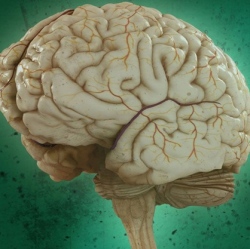
Non-invasive transcranial direct current stimulation (tDCS) could increase performance of associative learning. When applied to the prefrontal cortex, tDCS affects a wide portion of the brain, causing changes between different brain areas that increased learning speed in macaques.
They can now target stimulation, intervening only at critical points, when memory formation is most likely to occur. “We’re replicating monkey experiment with stimulation occurring only for one second” he said, “just when it gets the reward.” That’s when the association is made. They will eventually seek out FDA approval for a particular device. He believes that in 5-10 years, use of this technology will be widespread.
This new understanding of what tDCS does to the brain and its confirmation of tDCS as a learning aid comes in the context of controversy over previous reports that seemed to show no effect on neuron firing rates in cadaver heads, which was generally believed to be the mechanism of interest. tDCS-based behavioral results have also been questioned on statistical and methodological grounds, but those analyses have been criticized. The new HRL study confirmed behavioral changes that sped up learning with tDCS and found that learning improved regardless of neuron firing rates.
Done in collaboration with McGill University in Montreal and Soterix Medical in New York, the study was sponsored by the Defense Advanced Research Project Agency (DARPA)’s Restoring Active Memory (RAM) program. Published October 12, 2017, in the journal Current Biology, tDCS in animals showed learning accelerated by about 40% when given 2 mA noninvasively to the prefrontal cortex without increased neuronal firing. This study showed it was modulated connectivity between brain areas, not neuron firing rates, that accounted for the increased learning speed.
The behavioral task in this experiment was associative learning. The macaques had to learn arbitrary associations between a visual stimulus and a location where they would get a reward—a visual foraging task. The initial foraging trials took about 15 seconds, and once the animal learned the location of the reward, it took approximately 2 seconds to recall and find the target. Subjects in the control condition required an average of 22 trials to learn to obtain the reward right way. With tDCS they required an average of 12 trials.
“In this experiment we targeted the prefrontal cortex with individualized non-invasive stimulation montages,” said Dr. Praveen Pilly, HRL’s principal investigator on the study. “That is the region that controls many executive functions including decision-making, cognitive control, and contextual memory retrieval. It is connected to almost all the other cortical areas of the brain, and stimulating it has widespread effects. It is also the target of choice in most published behavioral enhancement studies and case studies with transcranial stimulation. We placed the tDCS electrodes on the scalp in both our control and stimulation conditions. The behavioral effect was revealed when they learned to find the reward faster.”
“The improved long-range connectivity between brain areas in the high frequency bands and reduced connectivity in the low frequency bands were the determining factors in our study that could explain the learning improvements with tDCS of the prefrontal cortex,” Pilly said. “Just because neurons can be more brisk in their firing may not lead to changes in performance. Boosting memory function likely requires better coordination of task-relevant information across the cortex.”
Highlights
•tDCS improves animals’ behavior on an associative learning task
•Stimulation has local effects on LFP power and coherence.
•It also causes frequency-specific changes in connectivity between brain areas
•Inter-area coherence in gamma frequencies is linked to behavioral improvement
There has been growing interest in transcranial direct current stimulation (tDCS), a non-invasive technique purported to modulate neural activity via weak, externally applied electric fields. Although some promising preliminary data have been reported for applications ranging from stroke rehabilitation to cognitive enhancement, little is known about how tDCS affects the human brain, and some studies have concluded that it may have no effect at all. Here, we describe a macaque model of tDCS that allows us to simultaneously examine the effects of tDCS on brain activity and behavior. We find that applying tDCS to right prefrontal cortex improves monkeys’ performance on an associative learning task.
While firing rates do not change within the targeted area, tDCS does induce large low-frequency oscillations in the underlying tissue. These oscillations alter functional connectivity, both locally and between distant brain areas, and these long-range changes correlate with tDCS’s effects on behavior. Together, these results are consistent with the idea that tDCS leads to widespread changes in brain activity and suggest that it may be a valuable method for cheaply and non-invasively altering functional connectivity in humans.
Some studies have shown that tDCS can improve verbal memory and cognition. And one small study found it might improve math retention. Research has even suggested that tDCS might be useful in treating conditions such as depression, Parkinson’s, and chronic pain.
Praveen Pilly and colleagues set out, not only to show that tDCS works but reveal the mechanism behind it. In this study, applying tDCS to the right prefrontal cortex was shown to improve a macaque monkey’s performance in what researchers called an “associative learning task.” In yet to be published research, as part of the REM RAM Replay program, they proved it works in humans, too.
Static electrical fields applied just outside the brain increased coherence between the right prefrontal cortex and the left inferotemporal cortex (ITC). These areas control executive function, which has to do with managing time, paying attention, remembering details, and other tasks associated with learning.
What they found is that tDCS can influence brain oscillations. “Transcranial stimulation can cause many statistically significant neural changes,” Dr. Pilly said. “Changes in functional connectivity between areas in high frequency bands accounts for improvements within learning.”
